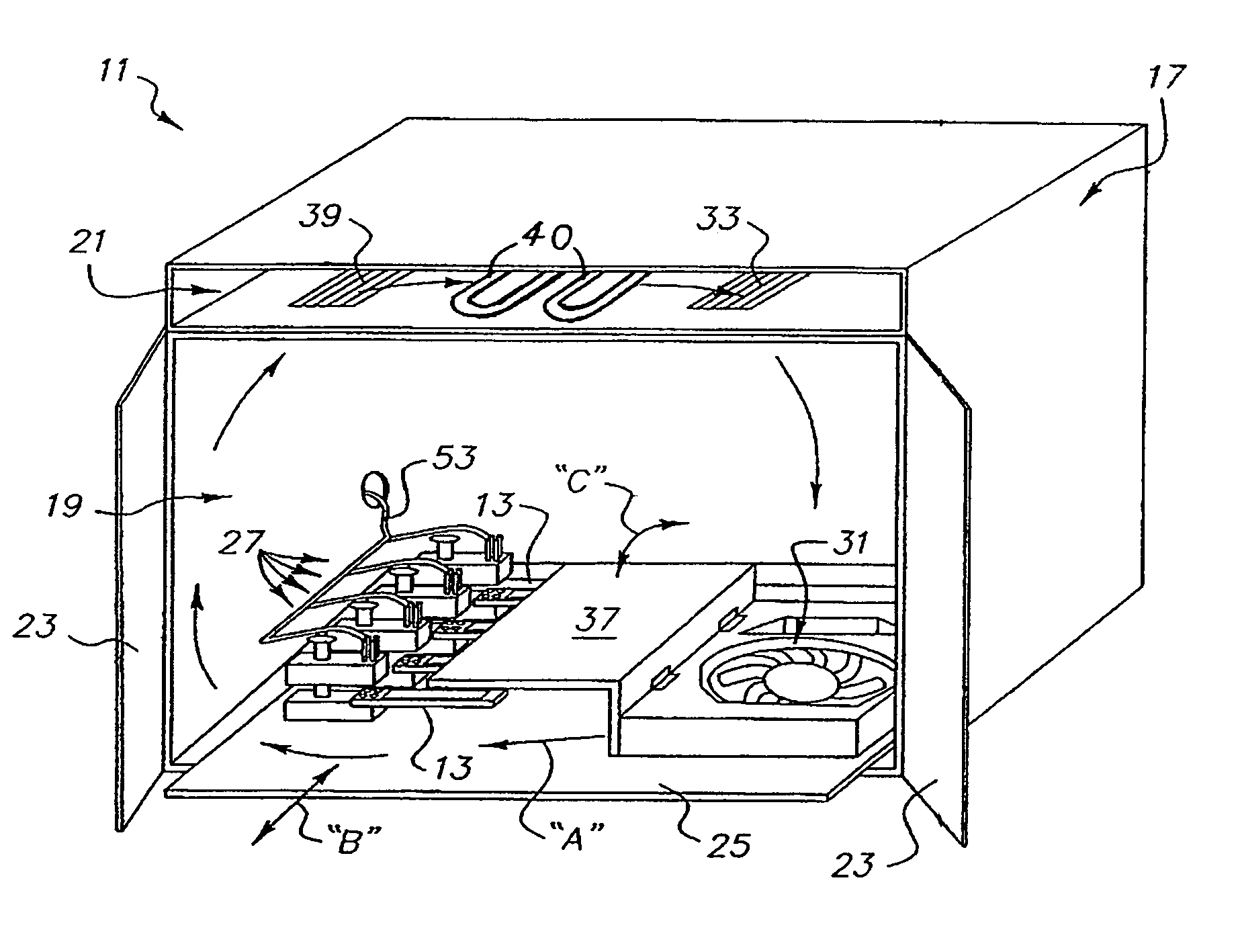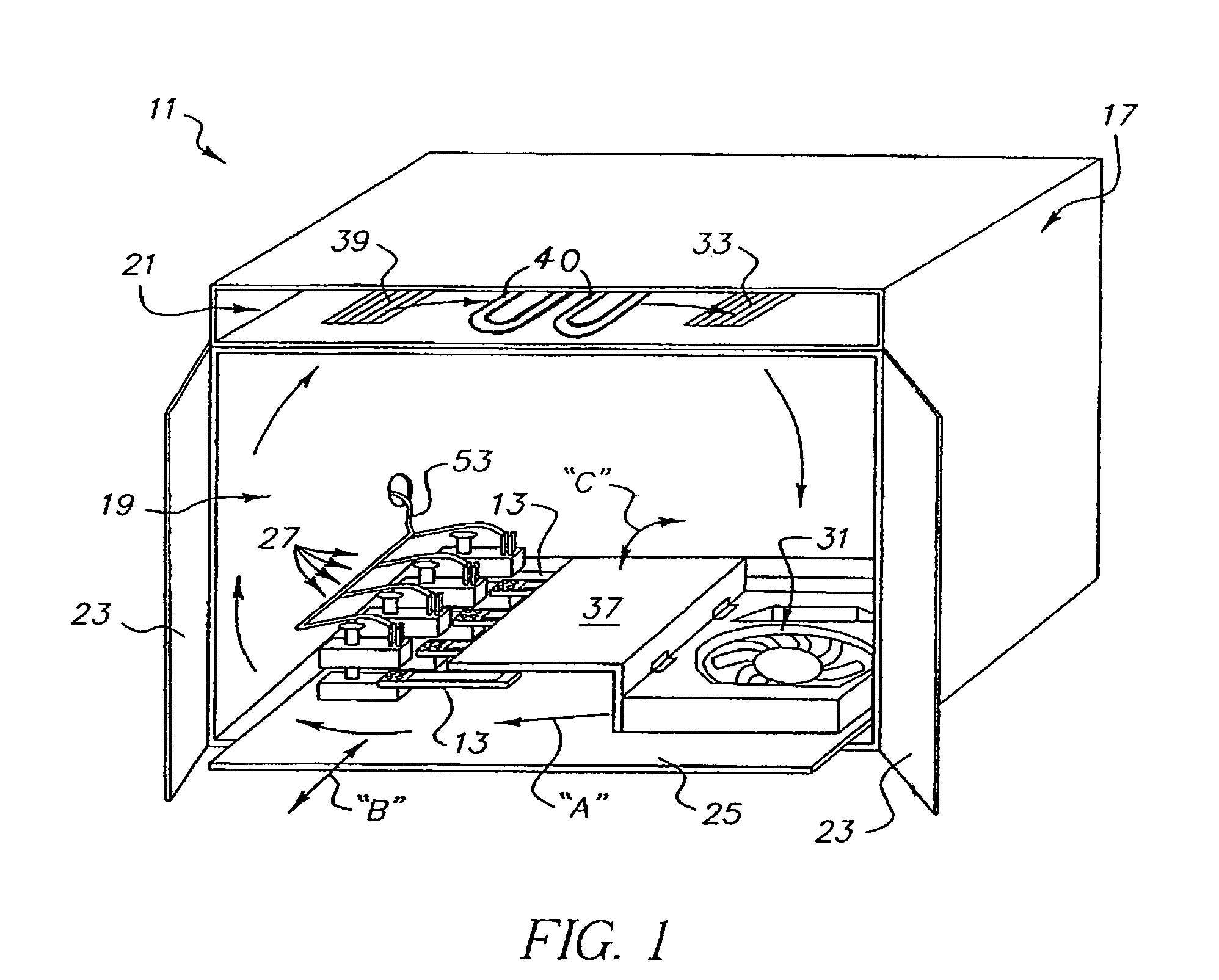Substrate test apparatus and method of testing substrates
- Summary
- Abstract
- Description
- Claims
- Application Information
AI Technical Summary
Benefits of technology
Problems solved by technology
Method used
Image
Examples
Embodiment Construction
[0027]For a better understanding of the present invention, together with other and further objects, advantages and capabilities thereof, reference is made to the following disclosure and appended claims in connection with the above-described drawings. Like figure numbers will be used from FIG. to FIG. to identify like elements in these drawings.
[0028]In FIG. 1 (compare also FIG. 3), there is shown a test apparatus 11 according to one embodiment of the invention. Apparatus 11 is designed for testing at least one (and preferably several, four being shown in FIG. 1) test substrates 13 when positioned therein. In one example, test substrate 13 is a “test coupon” integrally manufactured and processed together with a related, much larger PCB (not shown). Generally speaking, apparatus 11 (and the associated test system described herein-below) tests the coupon by thermally cycling it by first running electric DC current through the daisy-chained thru-holes (located in an area 15 (FIG. 2) bu...
PUM
 Login to View More
Login to View More Abstract
Description
Claims
Application Information
 Login to View More
Login to View More - R&D
- Intellectual Property
- Life Sciences
- Materials
- Tech Scout
- Unparalleled Data Quality
- Higher Quality Content
- 60% Fewer Hallucinations
Browse by: Latest US Patents, China's latest patents, Technical Efficacy Thesaurus, Application Domain, Technology Topic, Popular Technical Reports.
© 2025 PatSnap. All rights reserved.Legal|Privacy policy|Modern Slavery Act Transparency Statement|Sitemap|About US| Contact US: help@patsnap.com



